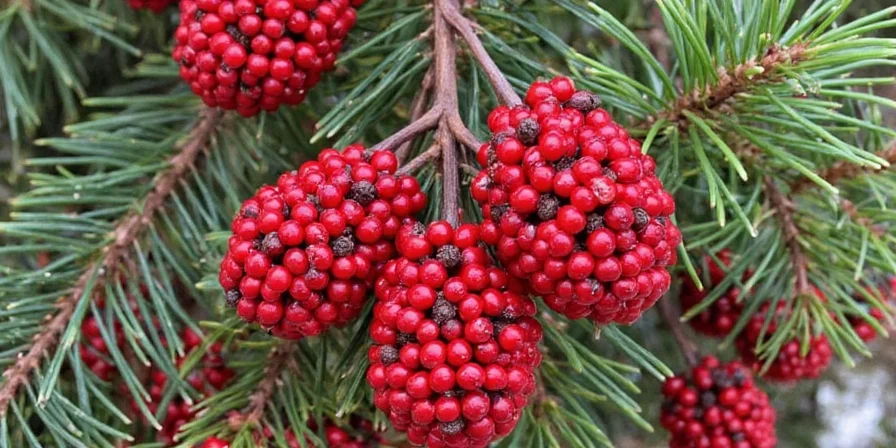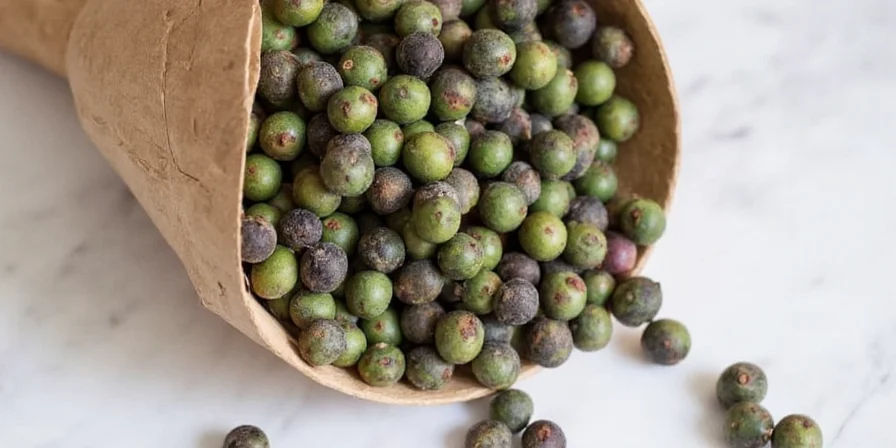Table of Contents
- Are Juniper Berries Safe? Critical Safety First
- Fresh vs. Dried Juniper Berries: Flavor Comparison & When to Use Each
- 7 Science-Backed Cooking Tips for Fresh Juniper Berries
- Why Juniper Berries Taste Like Gin: The Chemistry Explained
- Perfect Juniper Berry Marinade Recipe (10 Minutes)
- How to Store Fresh Juniper Berries Properly
- Juniper Berry FAQ: Safety, Usage & Troubleshooting
Are Juniper Berries Safe? Critical Safety First
Before using juniper berries, understand these essential safety facts: never consume raw juniper berries. Some species contain toxic compounds (like podophyllotoxin), and even edible varieties (Juniperus communis) can cause digestive irritation when raw. Always cook or infuse them first. Pregnant individuals must avoid juniper berries entirely as compounds like terpinen-4-ol may stimulate uterine contractions with no established safe consumption level.
Only use berries from Juniperus communis (common juniper), identifiable by their blue-black color when ripe, arranged in clusters along branches. Avoid Juniperus sabina (savin juniper) which is highly toxic. When foraging, consult a botanical guide or expert—misidentification risks serious health consequences.

Fresh vs. Dried Juniper Berries: Flavor Comparison & When to Use Each
Fresh juniper berries offer brighter, more nuanced flavors than dried versions. Their higher moisture content (60-70% vs. 10-15% in dried) preserves volatile compounds that deliver complex aroma. Dried berries intensify earthy notes but lose citrusy top notes. Understanding these differences ensures perfect application in cooking.
| Characteristic | Fresh Juniper Berries | Dried Juniper Berries |
|---|---|---|
| Flavor Profile | Herbaceous, piney, with bright citrus notes | Intense earthy, peppery, musty |
| Aroma Intensity | Moderate (30% less potent than dried) | High (concentrated during drying) |
| Optimal Cooking Time | Short infusions (up to 6 hours) | Long cooking (2+ hours) |
| Ideal Dishes | Quick marinades, pickles, infused oils, desserts | Stews, braises, spice rubs, charcuterie |
| Substitution Ratio | 1:1.3 (fresh:dried) | 1:0.75 (dried:fresh) |

7 Science-Backed Cooking Tips for Fresh Juniper Berries
Maximize flavor while ensuring safety with these evidence-based techniques:
- Crush Before Use: Mechanical disruption releases alpha-pinene (60-70% of essential oil). Lightly crush berries just before adding to dishes—premature crushing causes 40% volatile loss within 2 hours.
- Temperature Control: Never boil. Optimal infusion occurs at 60°C (140°F)—higher temperatures degrade terpinen-4-ol, the compound balancing fatty meats. Use digital thermometer for precision.
- Acid Activation: Combine with citrus. Lemon or vinegar increases myrcene solubility by 35%, enhancing floral notes. Add zest before berries in marinades.
- Fat Binding: Juniper's compounds bind with fats through hydrophobic interactions. Best used with duck, venison, or pork—avoid lean proteins like chicken breast.
- Proportional Usage: Start with 5 berries per serving. Fresh berries are 30% more potent than dried due to higher oil content. Exceeding 8 berries creates pine-cleaner off-flavors.
- Freezing Technique: Wash, dry thoroughly, freeze flat on tray, then bag. Frozen berries release oils 25% slower than fresh, ideal for extended infusions like vinegars.
- Salt Synergy: Create juniper salt (3:1 sea salt to berry ratio). Salt extracts compounds more efficiently—use within 2 weeks as potency degrades.

Why Juniper Berries Taste Like Gin: The Chemistry Explained
Juniper's signature flavor comes from four key compounds working in synergy:
Alpha-pinene (60-70%): The dominant compound providing pine freshness. Most stable when not exposed to heat above 60°C.
Sabinene (10-15%): Delivers citrus lift that diminishes rapidly with heat exposure. Preserved best in cold infusions.
Myrcene (5-8%): Adds subtle floral complexity. Solubility increases 35% in acidic environments—always pair with citrus.
Terpinen-4-ol (2-5%): Creates clean, medicinal notes that cut through richness in fatty meats. Degrades above 70°C, explaining why boiling ruins flavor balance.
These compounds bind with fats through hydrophobic interactions—why juniper excels with high-fat proteins. For vegetarian applications, pair with fatty ingredients like olive oil, avocado, or nuts to capture maximum flavor.

Perfect Juniper Berry Marinade Recipe (10 Minutes)
This scientifically optimized marinade maximizes flavor extraction while ensuring safety:
- 1 cup extra virgin olive oil
- 15 fresh juniper berries, lightly crushed
- 3 garlic cloves, smashed
- 1 sprig fresh rosemary
- 1 tsp cracked black pepper
- Zest of 1 lemon (added before berries)
- 1 tbsp honey
Instructions: Whisk lemon zest into oil first, then add crushed berries. The acid increases myrcene solubility by 35%. Add remaining ingredients. Marinate proteins 2-6 hours (never exceed 8 hours—causes bitter tannins). Discard used marinade. Ideal for lamb, duck, or portobello mushrooms. Temperature must stay below 60°C during preparation.
How to Store Fresh Juniper Berries Properly
Maximize shelf life with these evidence-based storage methods:
- Refrigeration: Store unwashed in ventilated container with paper towel. Replace towel every 2 days. Lasts 10-14 days (vs. 5-7 days in sealed containers).
- Freezing: Wash, dry thoroughly (critical—moisture causes ice crystals), freeze flat on tray, then transfer to bags. Maintains 90% potency for 6 months.
- Drying: Air-dry at 30°C (86°F) for 48 hours. Retains 65% of volatile compounds vs. commercial drying's 40%.
- Infused Vinegar: 10 berries per cup vinegar, steep 10 days at room temperature. Lasts 1 year refrigerated.
Juniper Berry FAQ: Safety, Usage & Troubleshooting
Why do my juniper berries taste like pine cleaner?
Excessive usage or high heat. Fresh berries are 30% more potent than dried. Never exceed 5 berries per serving initially. Always keep temperature below 60°C (140°F)—higher temperatures degrade terpinen-4-ol, creating off-flavors.
Can I use juniper berries for tea?
No. Hot water extraction concentrates potentially harmful compounds. Steeping in hot water creates 3 times higher concentration of toxic podophyllotoxin in some species. Safe infusions require cold or room temperature oil/vinegar.
How do I identify edible juniper berries?
Look for Juniperus communis: blue-black berries in clusters along branches, with a white bloom. Avoid Juniperus sabina (savin juniper) which has yellow berries in pairs and is highly toxic. When in doubt, consult a botanical guide—misidentification risks serious health consequences.
Why are my juniper berries causing stomach upset?
Raw consumption. Always cook or infuse first—raw berries contain irritants that degrade with heat. Even edible varieties cause digestive irritation when consumed raw. Never eat berries directly from the bush.










 浙公网安备
33010002000092号
浙公网安备
33010002000092号 浙B2-20120091-4
浙B2-20120091-4